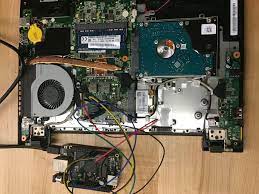Since prevention is better than a cure, you ideally want to prevent others from accessing your laptop in the first place. A simple way to do that is to lock your laptop behind a password whenever you step away from it.
On macOS, you can get back to the lock screen at any point by opening the Apple menu and choosing Lock Screen, or hitting the keyboard shortcut Ctrl+Cmd+Q. It’s straightforward on Windows, too. From the Start menu, click the “user” button (the avatar icon), then choose Lock. Alternatively, the Win+L keyboard shortcut works as well.
If you keep leaving your desk in a hurry or you just always forget to lock your computer when you step away from it, set your laptop to lock itself after a certain amount of idle time. On macOS, open the Apple menu and pick System Preferences, then go to Security & Privacy, and General, where you’ll check the Require password box and choose exactly when your computer will require a password after it goes to sleep or a screen saver appears. You can change the time it takes for a screen saver to appear under System Preferences > Desktop & Screen Saver > Screen Saver.
To automatically lock Windows, click the Settings cog on the Start menu, then go to Accounts and Sign-in options to make sure the Require sign-in option is set to When PC wakes up from sleep. To set idle time duration, go to Settings and pick System then Power & sleep.
How long you set this for is up to you—a shorter idle time is better for security and battery life, but also means your computer might lock itself while you’re still in front of it if you haven’t touched the keyboard or mouse for a few minutes. Start with something around five minutes, and adjust it if you feel that time is too short.
Let’s say you suspect someone might have been able to access your laptop while it was unlocked, or maybe even knows your password. Your next step should be to check for tell-tale signs of unusual activity inside the most commonly used apps.
Start with your web browser and call up the browsing history to see if someone else has left a trace. From the Chrome menu, go to History, then History again; from the Firefox menu, choose History, then Manage history; from the Microsoft Edge menu, choose History, then either All to view recent pages in a dropdown menu or the three dots in the top right of that menu followed by Open history page; and from the Safari toolbar on macOS, choose History, then Show All History.
Most programs on your computer have some kind of history or recent files list. In Microsoft Word, for example, click File, Open, then Recent. In Adobe Photoshop, you can choose File and Open Recent. Whatever the applications on your system, you should be able to find similar options.
Source : https://www.popsci.com/computer-tampering-security-guide/









